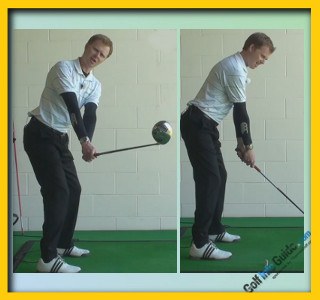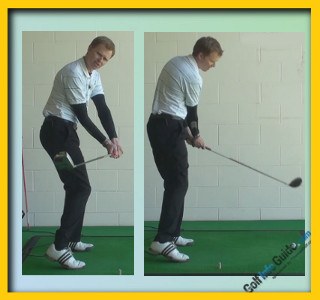Who Is He?

Patrick Cantlay is well known for his very bright amateur career and more latterly for a phenomenal round of 60 while playing in one of his first tour events on a sponsor's invite. That is one hell of an introduction to the professional game! At only five feet 10 inches tall and 160 pounds, Patrick Cantlay has to use all of his swing technique to produce his average driver distance of 301 yards.
What He Does
From a stable and athletic set up position, Cantlay has a tendency to take a golf club on quite an outside the line backswing path. This produces a relatively steep halfway back position that results in a slightly longer than desired top of the backswing position.
He then works it nicely to drop the golf club on the inside line to attack the golf ball from the correct line and has a huge extension through the golf ball down the target line. This delivers the power to the back of the ball to produce a strong, stable ball flight.

What Can You Learn?
The athletic posture and the wide takeaway that Patrick Cantlay employs are useful attributes for most club golfers to try to copy, as is his ability to bring the golf club down on a path that is slightly behind the backswing path. Conversely, the majority of club golfers bring the golf club down over the top and in front of the backswing position.
What Should You Avoid?
For a majority of club golfers, taking the club back as steeply as Patrick Cantlay does could be a dangerous move.

As previously stated, the majority of club golfers bring the downswing line in front of their backswing line, therefore, having a very steep backswing could result in a downswing that is excessively from out to in, producing a swing path that is to the left of target for the right handed golfer. This would often result in faded or sliced golf shots depending on the club face position.
In order to check that you are swinging the golf club back on the correct path, take a normal address position with a mirror directly behind your ball to target line. As you bring the golf club back to hip level, look into the mirror and try to avoid seeing any shaft at all. If your club head is sitting directly on top of your hands, your hands and the club shaft will disappear behind the club head. This is described as an on the plane backswing position. If the club is outside the line, you will see the club sitting in front of your hands. If the club has been rotated too flat behind your body, you will see that the shaft is visible this time, with the club head behind your legs when you view the swing in the mirror.






